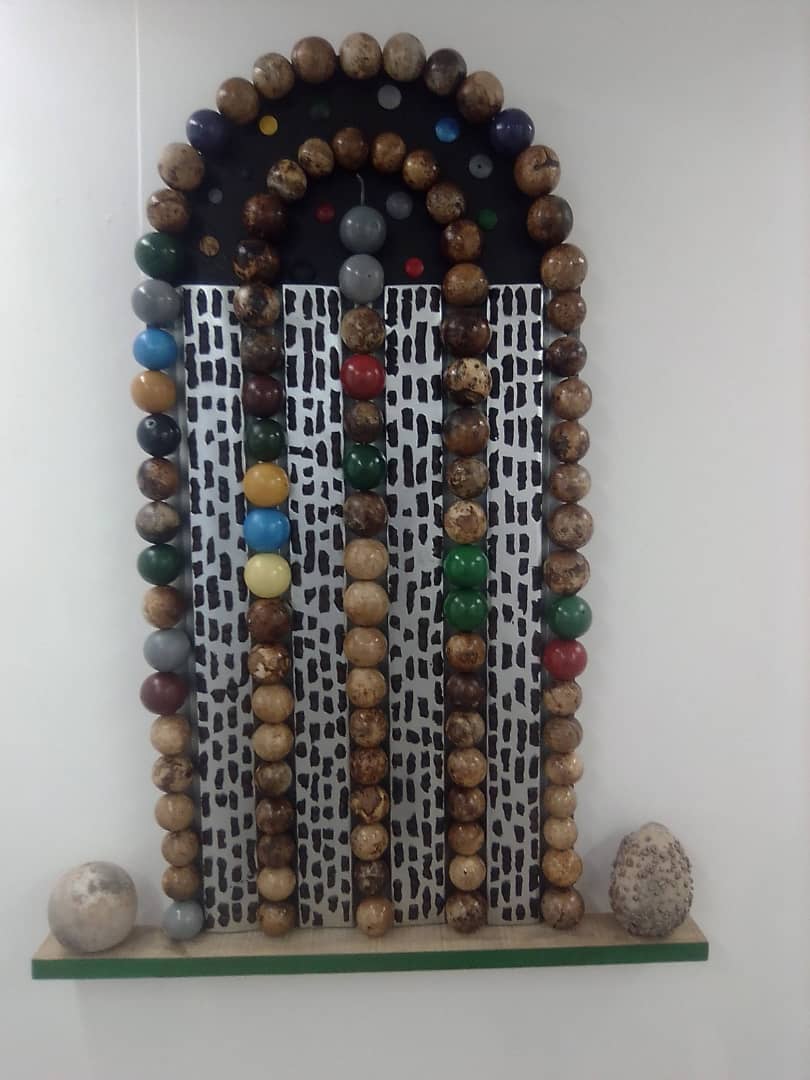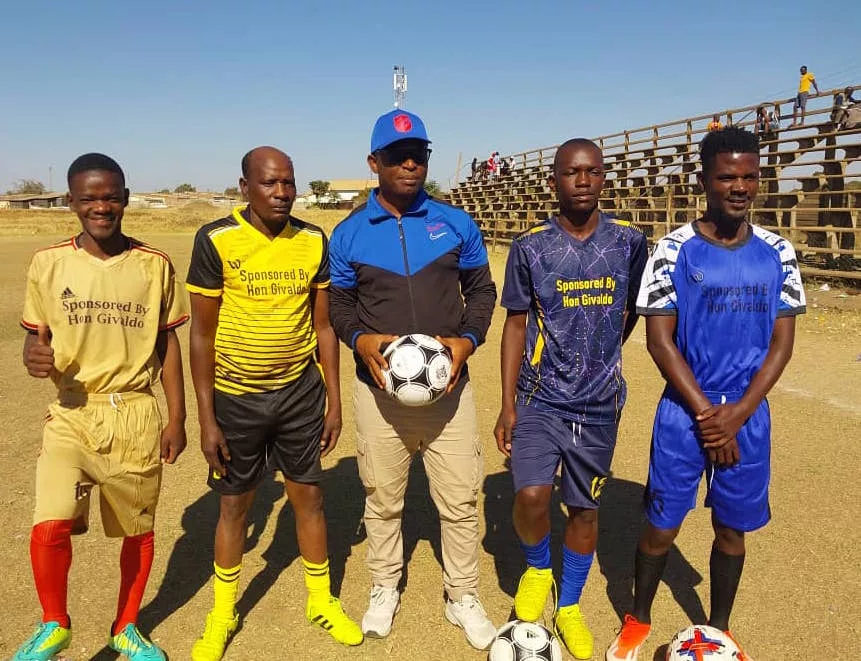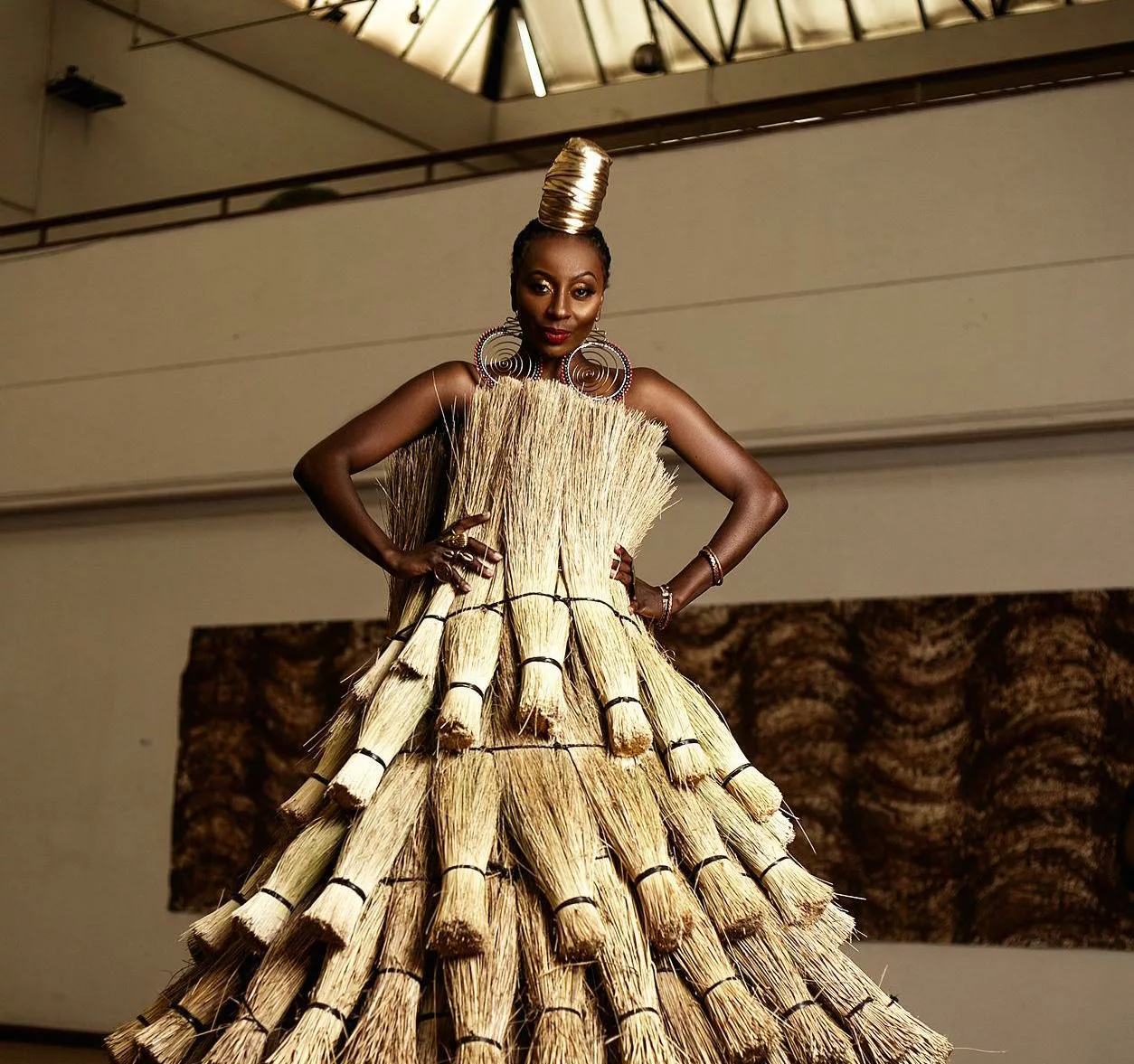By Tinashe Muchuri
Damba nePwere, a solo sculpture exhibition by Tapfuma Gutsa premiered in Harare on the 10th of October at First Floor Gallery. The show marked the reopening of the gallery to the public since the novel COVID-19 pandemic outbreak. The exhibition will run for 28 days from the launch day. Damba nePwere being the first show in Harare to open to the public saw over 100 faces masked visual art experience starved audience who braved temperature checks and sanitization at the gallery entrance, trooping in the art space to enjoy Tapfuma Gutsa the Master artist’s mastery questioning skills.
Damba nePwere is a mixed media sculpture exhibition of various dimensions crafted out of damba fruit shells (Klapper apple/monkey orange), eggshells, aluminium, gourd, steel, wood and horn to give a mouth-watering and sight arresting loaded experience.
Damba is a wild fruit that ripe in the warm season and is usually picked by children. Children enjoy playing games using the fruit. Damba nePwere according to the curator, Valerie Kabov, “is a pun. Damba is one fruit and pwere is both singular and plural of child/youth. So in this case the little translates child/children with a damba. Damba can also be derived from kutamba/to play ne/with pwere/vana/children. Further dzakatamba nePwere politely refers to a childish mind, simpleton children can occasionally manipulate and tease for a laugh.”
In addition to Kabov’s critic, Dambanevana is a place where the children play, and can also refer to a learning centre for little children/kindergarten/crèche where children play through play and or toys that the children play with hence Gutsa says his new work was informed and inspired by his late friend, the famous writer, Dambudzo Marechera, whom he said used to write about a giant child’s plating things.
“I had a friend called, Dambudzo Marechera; Marechera used to write about the giant child’s playing things when talking about makomo ekuEpworth/Epworth Balancing Rocks. That is how we invented this kind of work,” Gutsa said.
In the deeper side men are said to be pwere/little children in the Shona adage that says varume/men dzinenge/are like pwere/children padzarohwa/they return dzinodzokapo/where they are whipped. Some of the artifacts such as Chuma Changu made up of painted and polished matamba and gourd together with Damba nePwere made from painted and polished matamba resembles giant chuma chomuchiuno chamadzimai/women’s waist bead/mukanda whose main purpose is to be men’s playing things or used to activate men’s desire for sex or entertainment during intimate moments. Children also play with the chuma around their mothers’ neck and this lures them to sleep.
While on the other side, the led are referred to as children and their leader as either amai/mother or baba/father which can be represented by the Kereke 2 made from painted and polished matamba, corrugated aluminum bark, wood, and gourd resembling windows of orthodox churches. Fathers in churches and organizations regard the congregants as playthings without a voice of their own and thus toy with these children’s lives. Of recent, church leaders have been arraigned to the courts for abusing the congregants, some being acquitted and others sentenced to long terms in prison.
Damba can also make a very good musical instrument with three holes played by blowing wind into the centre hole by the mouth and ether alternatively closing the outer holes, hence ‘Trumpet for Bra Hugh’ made from painted and polished matamba, tonga basket, and wire which is a tribute to South African jazz music icon Hugh Masekela. Apart from listening to Marechera’s writing about the Epworth Balancing Rocks, Gutsa exhibited that he is a wide reader of various texts.
Children are adventurous and goal getting and vulnerable to their guardians and elders’ handling. They are what Kabov refer to as hard and fragile like matamba shells, egg shells and gourds.
Shatrisi, Disagreeable Object from Murehwa Zvinogumbura made from painted and polished matamba, found material and a horn/nyanga which seems to be driven from shatirisa/make angry and resemble a giant rize/scorpion which is an insect with a sharp and painful poisonous sting that in some instances causes death.
A scorpion resides in the house in the thatch or can come from the bush through the firewood we collect from the bust. One would say Shatrisi is a critic by Gutsa of the trending story of the suspected murder of a seven-year-old Murehwa (Where Gutsa comes from) boy, Tapiwa Makore junior by Tafadzwa Shamba cattle herder under the alleged instruction of Tapiwa Makore senior and employer of Shamba.
The tail of the giant scorpion is made of a horn/nyanga and the cause of Tapiwa Makore junior’s death is suspected to be a ritual killing to appease a nyanga/gona or what others would prefer calling it a blood-sucking goblin. The giant scorpion metaphorically informs the audience that and the internal enemy is more dangerous than the outsider and that the enemy who destroys the people from outside is actually brought in by the insider.
Gutsa’s new reminds us of his hand in the Basket Case and the mystical handcrafts of Nyanga. Gutsa once said ‘art is about questioning, delving, listening and planting ideas’ and his new solo exhibition is a testimony to this for it is deep, spiritual, and physical, it’s about the past, now, and the future and leaves a mark in the hearts of the audience.
The DNA made from painted and polished matamba reminds us of the Nyaminyami snake of the Tonga or the python which are deemed to be ancestral spirits. The christen religious ones may also be familiar with the snake in the wilderness during the exodus to which everyone who looked at it was saved. Mystically as it looks, every member of the audience despite of religious belonging finds own self in the frame, watching the world through the window or inside.
The locally found resources used by the artist also show that, when people are in a crisis, local resources are the best to take the underprivileged out of the crisis.
The time taken shows the artist’s patience and precision in his craft. The contrived space for such a big type of work is a critic of how people of Zimbabwe live their lives in a contrived space that doesn’t allow citizens to question certain practices. The restrictions were further extended by the COVID-19 pandemic outbreak.






